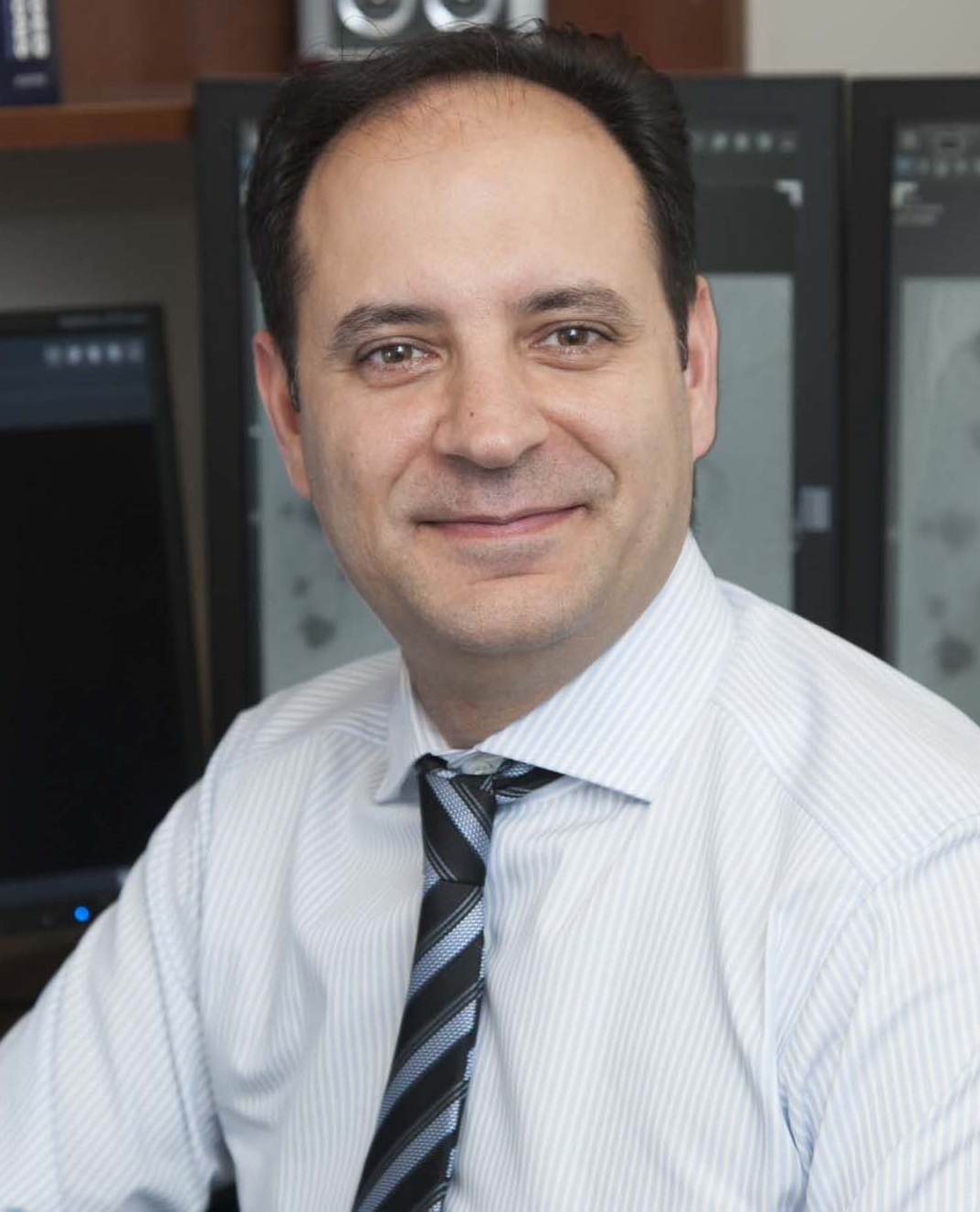Peer Reviewed Cancer



Posted September 24, 2020
Lawrence B. Schook, Ph.D., University of Illinois at Urbana-Champaign;
Stephen B. Solomon, M.D., Memorial Sloan Kettering;
Hooman Yarmohammadi, M.D., Memorial Sloan Kettering;
F. Edward Boas, M.D., Ph.D., Memorial Sloan Kettering;
Ron C. Gaba, M.D., M.S., University of Illinois at Chicago

Dr. Lawrence B. Schook

Dr. Stephen B. Solomon

Dr. Hooman Yarmohammadi

Dr. F. Edward Boas

Dr. Ron C. Gaba
Liver cancer is on the rise in the United States (US), and global incidence has increased 75% over the last 25 years.1 Hepatocellular carcinoma (HCC), the most common type of liver cancer, often develops in patients with diseased livers, such as from cirrhosis, fibrosis, hepatitis infection, aflatoxin exposure, obesity, or alcohol abuse, which can alter the genetic landscape.2 Studies have found that Veterans have a higher risk of developing HCC due to chronic hepatitis C infection and cirrhosis, making this disease an increasing concern for the Veterans Health Administration.3 Prognosis of this disease has been particularly dismal, with an average life expectancy of 12 months post diagnosis.2 Researchers face many challenges in developing new strategies for HCC treatment, particularly in establishing HCC models that mimic human disease. Current animal models are not sophisticated enough to represent the genetic complexity of a diseased liver, which occurs in about 90% of HCC cases, so tumors in these models often do not respond the same to novel therapies as clinically observed in patients.4 HCC animal models have also been extremely limited in their genetic backgrounds. The Peer Reviewed Cancer Research Program (PRCRP) has invested in researchers looking to address this critical issue and has funded projects focused on developing new preclinical models that can better mimic the physiology of human liver cancer and more accurately predict response to new treatments. One of these team-based projects, led by Dr. Lawrence Schook at the University of Illinois, has resulted in the development of an exciting new large animal model of HCC that could be used to more effectively develop and screen new cancer treatments.
Oncopig Cancer Model
The most commonly cited issue with advancing HCC treatments is the lack of an animal model with similar physiology and disease progression as humans.4 With a FY15 Translational Team Science Award, a team led by Dr. Lawrence Schook that includes Dr. Ron Gaba, Dr. Stephen Solomon, Dr. Hooman Yarmohammadi, and Dr. F. Edward Boas, has developed a new porcine model of HCC called the Oncopig Cancer Model. The Oncopig is genetically engineered and is similar in size, anatomy, physiology, genetics, and drug metabolism compared to humans, making it a highly relevant model of cancer.5,6 While other researchers have used pigs as cancer models, the game changer with this Oncopig Cancer Model is that they are also able to induce comorbidities such as obesity or cirrhosis of the liver, which is primarily how HCC presents in patients.7 For the first time, this allows researchers to study how liver cancer develops and responds to treatments in the context of a diseased liver.
Dr. Schook and his team designed the Oncopig so that researchers can induce liver disease before generating liver tumors. They developed and validated a protocol using transarterial infusion, which involves injecting ethanol-ethiodized oil directly in the hepatic arteries to cause alcohol-induced liver scarring (cirrhosis).7 This method resulted in durable and irreversible alcohol-induced liver cirrhosis, results of which were published in the Journal of Vascular and Interventional Radiology.
Dr. Schook’s team then developed a protocol to generate intrahepatic HCC tumors in the Oncopigs with cirrhosis.8 This was a challenging endeavor that required the researchers to first develop stable HCC cell lines from Oncopigs. These Oncopig HCC cell lines were shown to have the same tumorigenicity and sensitivity to chemotherapeutics as human HCC cell lines. They are also easily genetically manipulated, so the researchers can edit the genes to generate HCC tumors with different genetic backgrounds to allow testing of precision medicine in a preclinical setting.
The team generated two different methods for intrahepatic HCC tumors in the Oncopig: (1) injection of Oncopig HCC tumor cells into the hepatic artery, and (2) percutaneous injection of tumor cells into the hepatic lobe.6 They found that the Oncopigs developed HCC tumors genetically indistinguishable from human HCC tumors.8 They observed that HCC tumors had different vascular properties depending on which method was used for induction–they were hypervascular with arterial injection and hypovascular with percutaneous lobe injection.6 HCC patients often have hypervascular tumors, but a small subset presents with hypovascular tumors that are often less responsive to certain treatment delivery methods such as embolization, which involves injecting the drug directly into the hepatic artery.6 Having an animal model recapitulate these complexities gives scientists the ability to more accurately test how HCC tumors with different properties can affect treatment outcomes.
Dr. Schook’s team is currently looking to validate the Oncopig HCC/cirrhosis model as an accurate predictor of therapeutic response, especially to embolization procedures. This would allow use of the Oncopig to quickly test efficacy of different drug delivery methods and novel therapeutics in treating liver cancer, which would better translate to clinical trials.
This research was conducted under an Institutional Animal Care and Use Committee–approved protocol in compliance with the Animal Welfare Act, Public Health Service policy, and other federal statutes and regulations relating to animals and experiments involving animals. The facility where this research was conducted is accredited by the Association for Assessment and Accreditation of Laboratory Animal Care, International and adheres to principles stated in the Guide for the Care and Use of Laboratory Animals.
References:
1McGlynn KA, Petrick JL, London WT. 2015. Global epidemiology of hepatocellular carcinoma: An emphasis on demographic and regional variability. Clin Liver Dis. 19(2):223-238. doi:10.1016/j.cld.2015.01.001
2Yang JD, Hainaut P, Gores GJ, et al. 2019. A global view of hepatocellular carcinoma: Trends, risk, prevention and management. Nat Rev Gastroenterol Hepatol. 16(10):589-604. doi:10.1038/s41575-019-0186-y
3Persson EC, Quraishi SM, Welzel TM, et al. 2012. Risk of liver cancer among US male veterans with cirrhosis, 1969-1996. Br J Cancer. 107(1):195-200. doi:10.1038/bjc.2012.193
4Schachtschneider KM, Jungersen G, Schook LB, and Shanmuganayagam D. 2019. Editorial: "Humanized" large animal cancer models: Accelerating time and effectiveness of clinical trials. Front Oncol. 9:793. Published 2019 Aug 27. doi:10.3389/fonc.2019.00793
5Schachtschneider KM, Schwind RM, Newson J, et al. 2017. The oncopig cancer model: An innovative large animal translational oncology platform. Front Oncol. 7:190. Published 2017 Aug 23. doi:10.3389/fonc.2017.00190
6Schachtschneider KM, Schwind RM, Darfour-Oduro KA, et al. 2017. A validated, transitional and translational porcine model of hepatocellular carcinoma. Oncotarget. 8(38):63620-63634. Published 2017 Jun 29. doi:10.18632/oncotarget.18872
7Gaba RC, Mendoza-Elias N, Regan DP, et al. 2018. Characterization of an inducible alcoholic liver fibrosis model for hepatocellular carcinoma investigation in a transgenic porcine tumorigenic platform. J Vasc Interv Radiol. 29(8):1194-1202.e1. doi:10.1016/j.jvir.2018.03.007
8Gaba RC, Elkhadragy L, Boas FE, et al. 2020. Development and comprehensive characterization of porcine hepatocellular carcinoma for translational liver cancer investigation. Oncotarget. 11(28):2686-2701. Published 2020 Jul 14. doi:10.18632/oncotarget.27647
Link:
Last updated Friday, December 13, 2024














